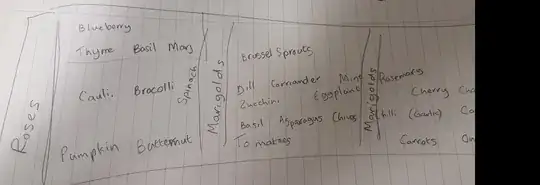I am planning to grow a new vegetable/herb garden. I am relatively new to gardening, so could use any feedback on the attached layout I have created. Some of the herbs have started growing indoors, but I'm still waiting for most of the seeds to arrive. I am also trying my luck at growing lemon, fig and olive from seed - although I'd be happy if even one grows, so I'm not planning this with them in mind.
I have about 16x3 meters, perhaps more. The area gets evening sun, perhaps 8 hours this time of the year, and the top edge is against a wall. I am in England, where the winters are long and it rains a lot.
Any feedback?
